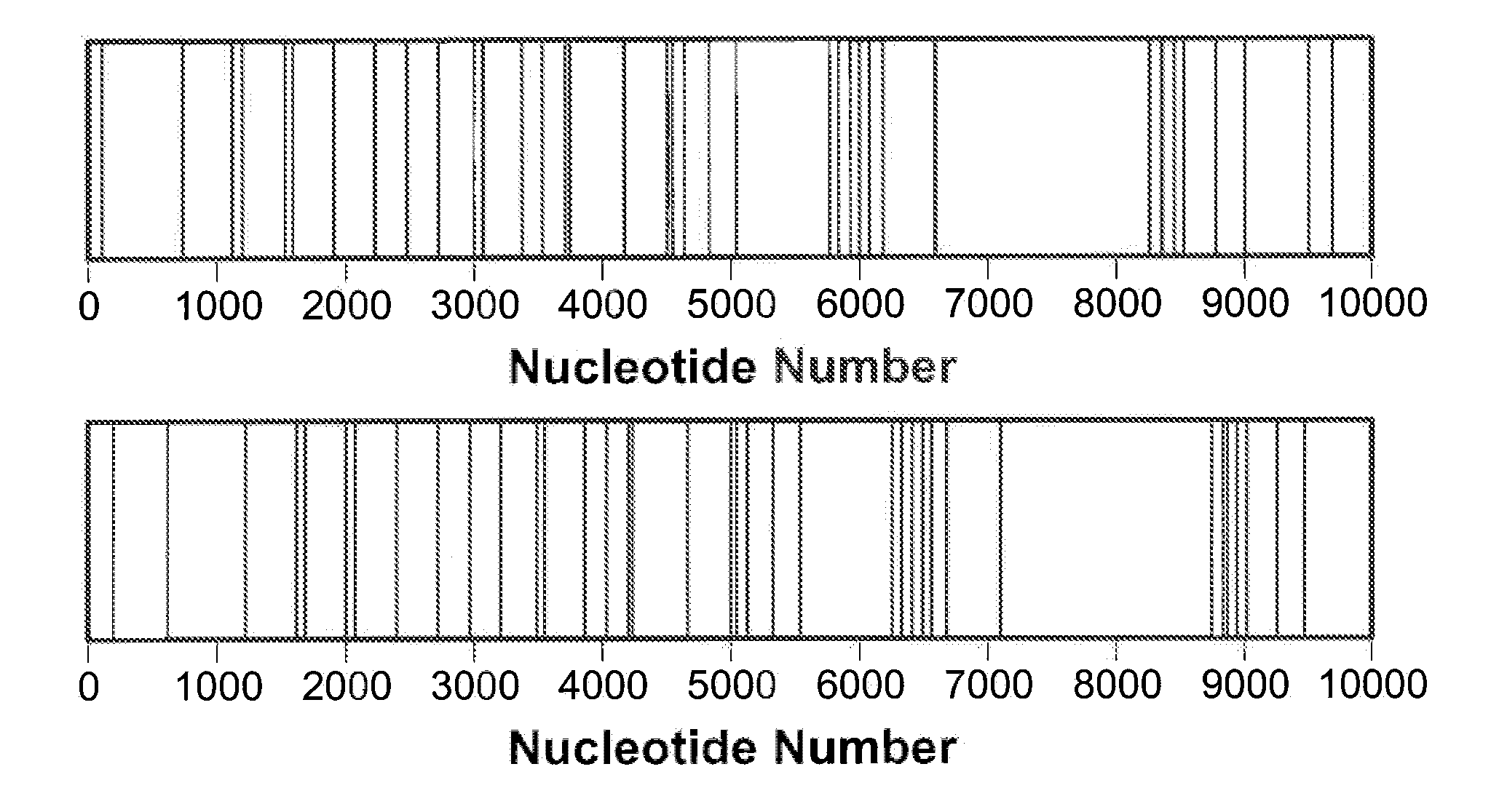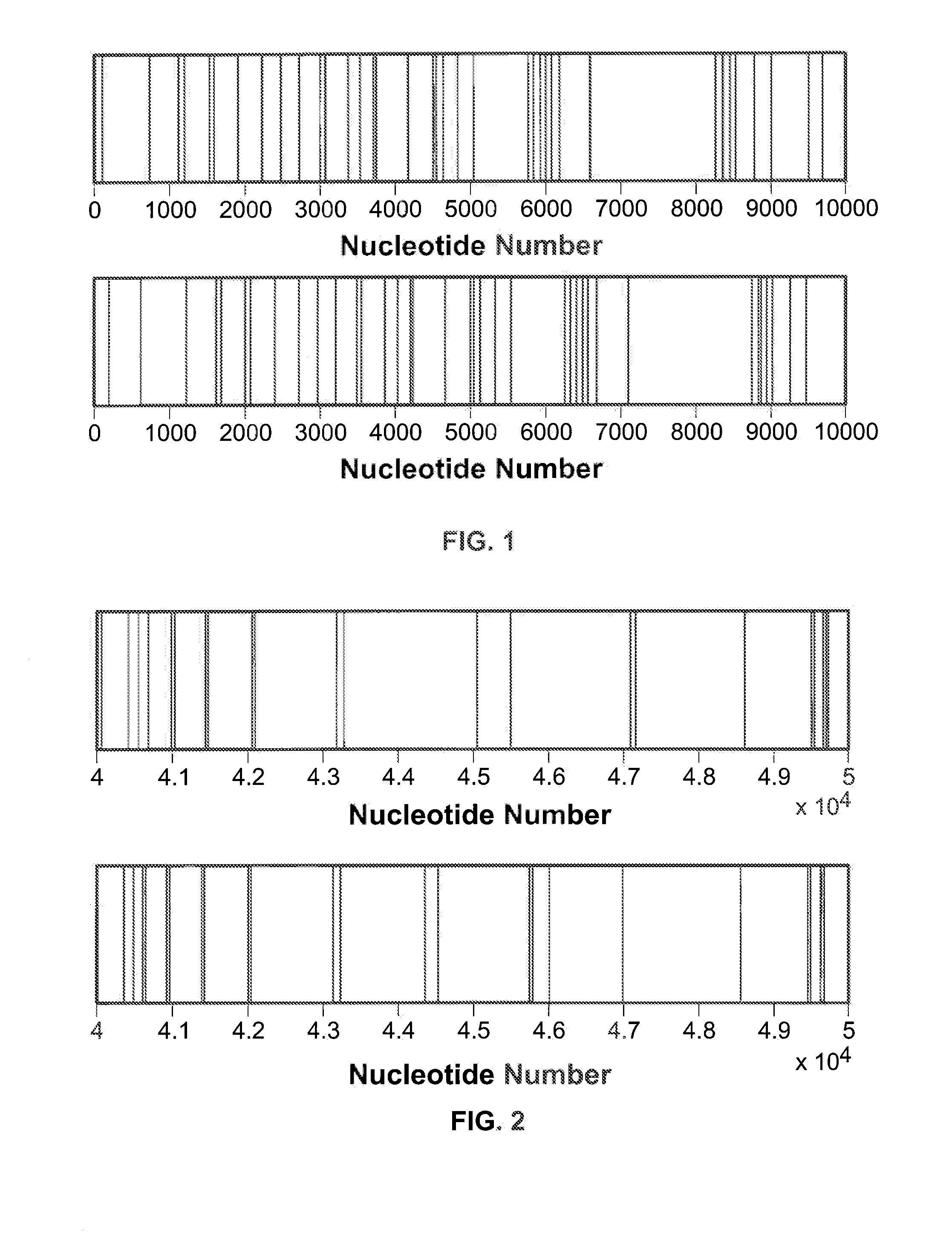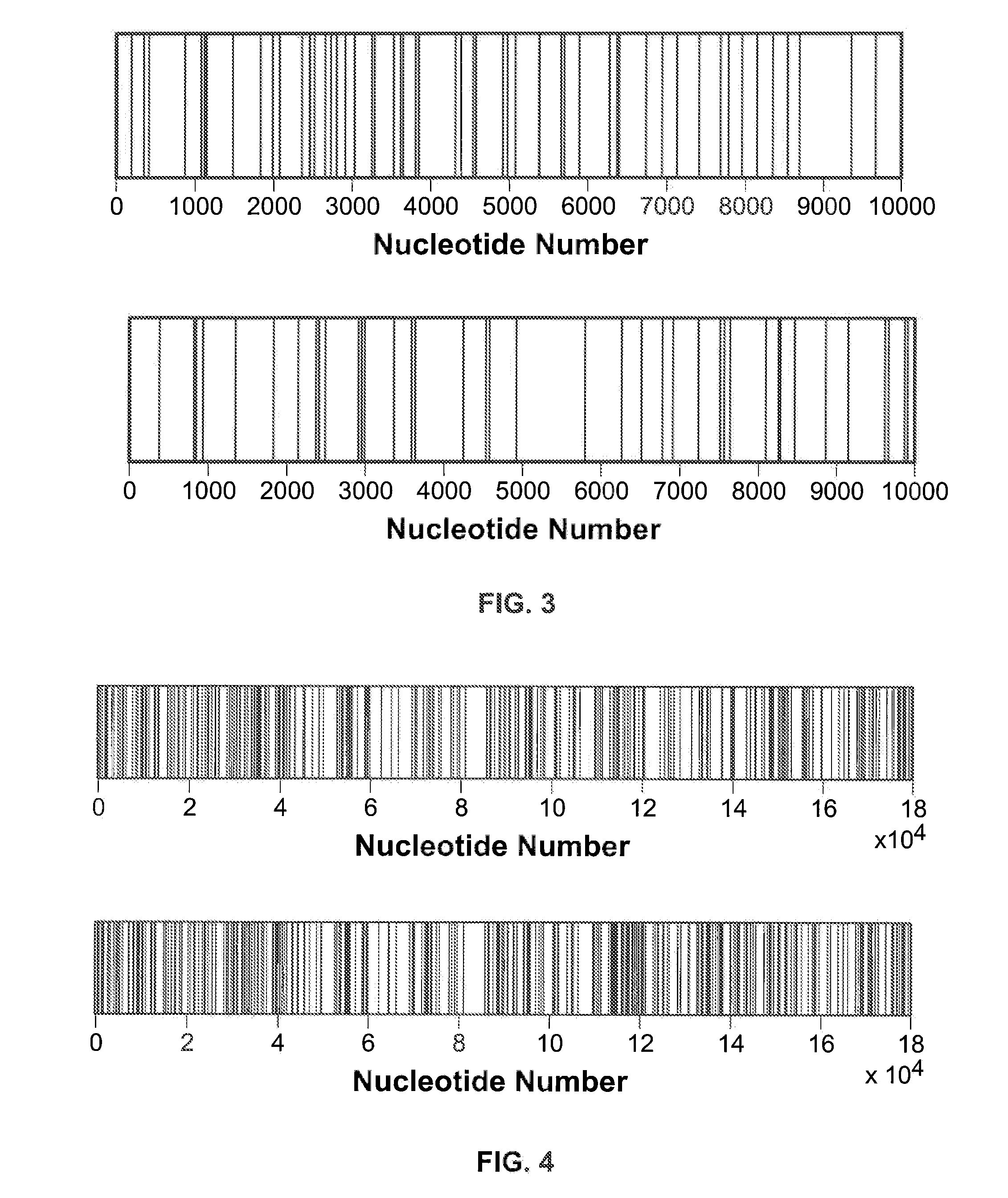Rapid Genomic Sequence Homology Assessment Scheme Based on Combinatorial-Analytic Concepts
a genomic sequence and homology assessment technology, applied in the field of genomic sequence homology assessment schemes based on combinatorial analysis concepts, can solve the problems of limiting the accuracy of statistical models, requiring this method to be fast and impractical, and dynamic programming variants spending a good part of their time, so as to reduce the number of computations and computationally efficient identification
- Summary
- Abstract
- Description
- Claims
- Application Information
AI Technical Summary
Benefits of technology
Problems solved by technology
Method used
Image
Examples
example 1
Sequence Homology Assessment
Sequence Homology Assessment Algorithm
[0169]The abundance and similarity of distributions of difference sets in B. anthracis plasmids is shown in this example. Since distributions of difference sets are significantly shorter than DNA sequences, similarity of the distributions can be assessed faster than similarity of the DNA sequences. Coupling this procedure with the Fourier space cross-correlation method further enhances the speed advantage.
[0170]The main step in the design of the difference set-based procedure for assessing DNA sequence homology is the construction of a compact representation of the difference set distribution. This step can be implemented in several ways. The following example illustrates the simplest, but not necessarily the most efficient, of these implementations.
[0171]DNA subsequences associated with one of the four nucleotides were compared. Results of the four binary analyses were combined by summing the four individual correlat...
example 2
Comparison of the Results in Example 1 with Benchmarks
[0195]In Example 1, a novel algorithm for efficient identification of matching and mismatching regions of highly homologous DNA sequences was described. In this example, the performance of this algorithm with that of the state-of-the-art methods were compared. Surprisingly, few techniques have been designed to address this problem directly. Most DNA sequence alignment methods such as BLAST, MuMmer and PatternHunter, are not well suited to this task: they produce large lists of overlapping alignments that difficult to disambiguate, rather than enumeration of unique genomic differences. The only generally available method we were able to identify that targets the same application as the difference set approach is the diffseq code of the EMBOSS suit of sequence analysis tools.
[0196]The performance of the diffseq and difference set methods using the pXO1 plasmids (181654 bp) and the chromosomal sequences (5 227 293 bp) of two strains...
example 3
Detection of Single Nucleotide Polymorphisms in B. anthracis
[0203]Three strains of the B. anthracis genome were compared and previously unpublished single nucleotide polymorphisms (SNPs) were revealed. Moreover, it was discovered that, despite the highly monomorphic nature of B. anthracis, the SNPs are (1) abundant in the genome and (2) distributed relatively uniformly across the sequence.
[0204]The occurrence of SNPs was investigated in the three main strains of the B. anthracis genome: Ames Ancestor, Ames and Sterne. SNPs were shown to be abundant in the B. anthracis genome and that they were distributed relatively uniformly throughout the sequence. These findings demonstrated that the B. anthracis SNPs can be used effectively as part of an increased resolution, multi-tier strain differentiation scheme for the analysis of moderately incomplete, noisy or uncertain data. The SNP detection approach used here is based on an advanced design theory construction known as the cyclic diffe...
PUM
 Login to View More
Login to View More Abstract
Description
Claims
Application Information
 Login to View More
Login to View More - R&D
- Intellectual Property
- Life Sciences
- Materials
- Tech Scout
- Unparalleled Data Quality
- Higher Quality Content
- 60% Fewer Hallucinations
Browse by: Latest US Patents, China's latest patents, Technical Efficacy Thesaurus, Application Domain, Technology Topic, Popular Technical Reports.
© 2025 PatSnap. All rights reserved.Legal|Privacy policy|Modern Slavery Act Transparency Statement|Sitemap|About US| Contact US: help@patsnap.com



